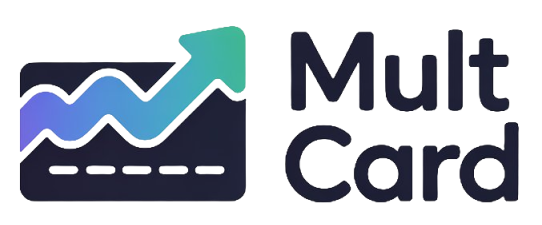In today’s digital world, the process of getting a credit card has shifted from lengthy bank visits to a few simple clicks online. This convenience has opened up a world of financial tools to more people than ever before. However, the ease of access also means it’s crucial to approach the process with a clear plan and understanding.
This guide is designed to demystify the entire journey for you. We’ll walk you through every stage, from preparing your finances and choosing the right card to navigating the application form and understanding what happens after you hit “submit.” Let’s get started on the path to securing your new credit card with confidence.
Understanding the Basics Before You Apply
Before jumping into applications, it’s wise to get a firm grip on the fundamentals. A credit card is more than just a piece of plastic; it’s a financial agreement between you and an issuer (like a bank). The issuer grants you a line of credit, which is a loan you can draw from to make purchases. You then repay the borrowed amount over time. Understanding the terms of this agreement is key to using a credit card responsibly.
Key Terminology You Need to Know
The world of credit is filled with jargon. Getting familiar with these terms will help you compare offers accurately and avoid any surprises down the road. Here are the most important ones:
| Term | What It Means |
|---|---|
| APR (Annual Percentage Rate) | The interest rate you’ll pay on any balance you don’t pay off in full each month. It can be fixed or variable. |
| Annual Fee | A yearly fee some cards charge for the privilege of using them. Many cards have no annual fee. |
| Credit Limit | The maximum amount of money you can charge to the card. This is determined by the issuer based on your creditworthiness. |
| Grace Period | The period between the end of a billing cycle and your payment due date. If you pay your full balance during this time, you won’t be charged interest. |
| Minimum Payment | The smallest amount of your balance you must pay each month to keep your account in good standing. Paying only the minimum will result in interest charges. |
Step 1: Assess Your Financial Health
Before a lender decides to trust you with credit, they want to see that you can manage it. This means you need to take an honest look at your own financial situation. Think of it as preparing your financial resume before a job interview. A strong financial picture significantly boosts your chances of approval for the card you want.
Checking Your Credit Score: The First Crucial Step
Your credit score is a three-digit number that summarizes your credit risk. Lenders use it as a primary factor in their decision-making. Scores generally range from 300 to 850, with higher scores being better. Here’s a general breakdown:
- Excellent: 800 – 850
- Very Good: 740 – 799
- Good: 670 – 739
- Fair: 580 – 669
- Poor: 300 – 579
Knowing your score helps you understand which tier of credit cards you’ll likely qualify for. You can get your credit report for free from the major credit bureaus (Equifax, Experian, and TransUnion) through government-mandated sites. Reviewing your report also allows you to spot and dispute any errors that could be dragging your score down.
Understanding Your Debt-to-Income (DTI) Ratio
Another key metric lenders look at is your debt-to-income ratio. This percentage shows how much of your monthly gross income goes toward paying your total monthly debt payments (like rent/mortgage, car loans, and student loans). To calculate it, simply divide your total monthly debt payments by your monthly gross income. Most lenders prefer a DTI below 43%, with many favoring a ratio below 36% for the best loan terms and credit card offers.
Step 2: Research and Compare Credit Cards
Once you know where you stand financially, the fun part begins: shopping for the right card. With hundreds of options available, it’s easy to get overwhelmed. The key is to narrow down the choices based on your spending habits and financial goals.
Identifying Your Needs: What Kind of Card is Right for You?
Not all credit cards are created equal. They are designed for different types of consumers. Think about what you want to get out of a card:
- Rewards Cards: These offer cash back, points, or travel miles on your purchases. They are great if you pay your balance in full each month and want to get something back for your spending.
- 0% Intro APR Cards: These cards offer a promotional period (often 12-21 months) with no interest on new purchases or balance transfers. They are ideal for financing a large purchase or consolidating high-interest debt.
- Secured Credit Cards: If you have a poor credit history or no credit at all, a secured card is an excellent tool for building it. You provide a cash deposit that typically becomes your credit limit.
- Student Cards: Designed for college students, these cards are often easier to qualify for and can help start building a positive credit history early.
- Travel Cards: These offer perks like airline miles, hotel points, free checked bags, and airport lounge access. They’re perfect for frequent travelers.
Comparing Key Features: A Side-by-Side Look
When you’ve identified the type of card you want, it’s time to compare specific offers. Look beyond the flashy sign-up bonuses and examine the long-term value.
| Feature to Compare | Why It Matters | What to Look For |
|---|---|---|
| Welcome Bonus | Offers a large lump sum of points, miles, or cash back for meeting a minimum spending requirement in the first few months. | A bonus that is valuable to you and has a spending requirement you can meet comfortably with your normal budget. |
| Ongoing APR | The interest rate you’ll pay after any introductory 0% APR period ends. | The lowest possible rate, especially if you anticipate carrying a balance from time to time. |
| Fees (Annual, Foreign Transaction, Late Payment) | Fees can quickly negate the value of any rewards you earn. | Cards with no annual fee or one that is justified by the card’s benefits. No foreign transaction fees if you travel internationally. |
| Rewards Structure | How you earn rewards (e.g., flat rate on all purchases vs. bonus categories like dining or groceries). | A structure that aligns with your top spending categories to maximize your earnings. |
Step 3: Gather the Necessary Documents and Information
To make the online application process as smooth as possible, have all your information ready beforehand. This will prevent you from having to stop midway to search for a piece of data, which could cause the application page to time out.
Your Personal Information Checklist
Most online credit card applications will ask for the same standard set of personal details. Be prepared to provide the following:
- Full Legal Name
- Date of Birth
- Social Security Number (SSN) or Individual Taxpayer Identification Number (ITIN)
- Permanent Address (a P.O. Box is generally not accepted)
- Phone Number and Email Address
- Citizenship Status
Proof of Income and Employment Details
Lenders need to verify that you have the ability to repay any money you borrow. You’ll need to report your total gross annual income. This can include more than just your salary from a job. You can often include income from:
- Part-time jobs or side hustles
- Spouse’s income (if you have reasonable access to it)
- Retirement funds or pensions
- Investment returns
- Alimony or child support
You’ll also need to provide your employment status (employed, self-employed, unemployed, student, etc.) and potentially your employer’s name and address.
Step 4: The Online Application Process, Demystified
With your research done and your information gathered, you’re ready for the final step. The online application itself is usually straightforward and takes only a few minutes to complete.
Navigating the Online Application Form
Most application forms are broken into sections for personal, housing, and financial information. Move through each section carefully. Double-check every entry for typos, especially your name, address, and SSN. A simple mistake can lead to an automatic denial or delays in processing.
The Importance of Accuracy and Honesty
It can be tempting to inflate your income to improve your chances of approval, but this is a bad idea. Providing false information on a credit application is a federal crime. Lenders also have ways to verify income, and if you’re caught, you’ll be denied, and your relationship with that financial institution will be damaged. Always provide truthful and accurate information.
Submitting Your Application Securely
You’re sharing sensitive personal data, so security is paramount. Before you enter any information, ensure the website address begins with “https://” and has a padlock icon in the address bar. This indicates the connection is encrypted and secure. Avoid applying for credit on public Wi-Fi networks, which can be vulnerable to snooping.
Step 5: After You Hit ‘Submit’ – What Happens Next?
The moment of truth! After you submit your application, one of three things will happen, often within 60 seconds.
Instant Approval, Denial, or a Pending Decision
- Instant Approval: Congratulations! The issuer will display your approval, your new credit limit, and an estimated timeframe for when you’ll receive your physical card in the mail (usually 7-10 business days).
- Pending Decision: This is very common and doesn’t mean you’ll be denied. It simply means a human needs to review your application, or the issuer needs to verify some of your information. You might be able to call a reconsideration line to speed up the process, or you’ll receive a decision by mail or email within a few days or weeks.
- Denial: If you’re denied, don’t be discouraged. By law, the issuer must send you an adverse action notice explaining the specific reasons for the denial. This letter is valuable feedback for what you need to work on.
What to Do If You’re Denied
Use the denial as a learning experience. The adverse action letter might point to a high DTI, a low credit score, or too many recent credit inquiries. Review your credit report again for errors. You can also call the issuer’s reconsideration line to speak with an analyst. Sometimes, you can provide additional context or information that might get the decision overturned.
Common Mistakes to Avoid When Applying Online
Navigating the application process is easier when you know the common pitfalls. Here are some key mistakes to steer clear of:
- Applying for Too Many Cards at Once: Each application typically results in a “hard inquiry” on your credit report, which can temporarily lower your score by a few points. Spacing out applications is a much better strategy.
- Not Reading the Terms and Conditions: The “fine print” contains crucial details about fees, interest rates, and penalties. Always read it before you agree.
- Overestimating Your Income: As mentioned, this is fraudulent and can lead to serious consequences beyond just a credit denial.
- Choosing the Wrong Card for Your Needs: Don’t be swayed by a single flashy perk. Make sure the card’s overall structure, from rewards to fees, is a good long-term fit for you.
- Ignoring Your Credit Score Beforehand: Applying for a premium travel card with a fair credit score is likely to result in a denial. Know where you stand to apply for cards you’re likely to be approved for.
Conclusion: Your Path to Financial Flexibility
Applying for a credit card online is a straightforward process when you’re prepared. By assessing your financial health, researching your options, and carefully completing the application, you set yourself up for success. Remember that a credit card is a tool. When used responsibly—by paying your bill on time and keeping balances low—it can be a powerful asset for building your credit history, earning rewards, and managing your cash flow.
For more comprehensive guidance on selecting and managing credit, the Consumer Financial Protection Bureau offers a detailed guide on how to apply for an online credit card and understand the associated terms. This knowledge is the first step toward a healthier financial future.




